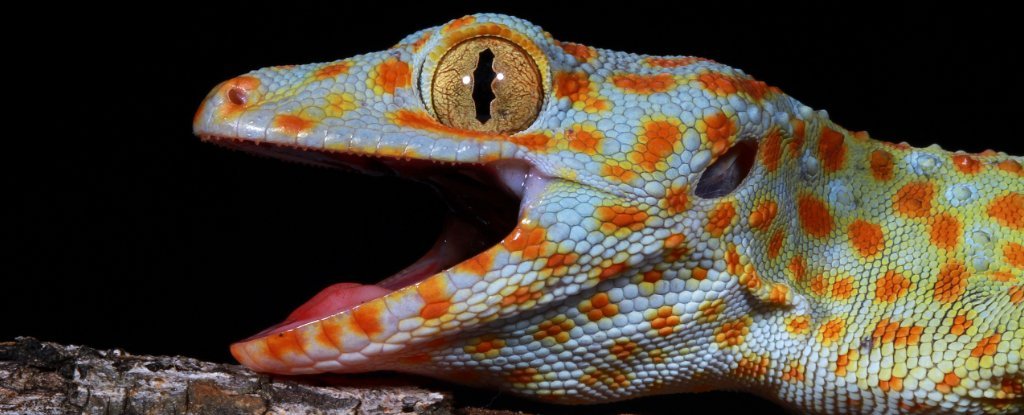Geckos, famous for their sticky feet and remarkable climbing abilities, have astonished scientists by possessing a ‘sixth sense’ that allows them to perceive deep, low-frequency vibrations.
This groundbreaking discovery provides new insights into the auditory capabilities of these fascinating reptiles.

Researchers at the University of Maryland, led by biologists Catherine Carr and Dawei Han, have found that tokay geckos (Gekko gecko) can use their inner ear structure, the saccule, to detect vibrations between 50 and 200 Hertz.
This discovery highlights a unique aspect of their hearing abilities.
Traditionally, the saccule has been associated with balance and body positioning, not hearing.
Interestingly, while geckos hear airborne sounds through their ears, this ‘sixth sense’ lets them detect sound vibrations through mediums like ground or water, much like ancient mechanisms in amphibians and fish.
This discovery suggests an evolutionary link that extends from aquatic to terrestrial vertebrates.
The research conducted by Carr and Han involved monitoring the brain activity of tokay geckos using tungsten electrodes, specifically targeting the saccule and its direct connection to neurons known as the vestibularis ovalis (VeO) in the hindbrain.
These neurons, which don’t receive input from other ear structures, respond acutely to specific vibration frequencies, indicating a dedicated vibrational sensing pathway.
This finding redefines our understanding of how geckos, and potentially other reptiles, perceive their surroundings.
The use of vibrational signals might be more widespread than previously thought, suggesting that reptiles like snakes and lizards could also employ similar sensory mechanisms.
The implications extend beyond reptiles, offering a fresh perspective on the evolution of hearing across vertebrates.
The study hints that hearing mechanisms might have evolved more intricately as animals transitioned from aquatic to land environments.
Though this discovery is primarily relevant to reptiles, it draws parallels to human experiences, such as the way our vestibular system is stimulated during loud concerts.
These insights could pave the way for further research into the connections between hearing and balance, potentially leading to advances in understanding human sensory experiences and disorders.
The scientists’ findings, published in the journal Current Biology, open the door to new questions about the evolution of hearing in animals.
This unexpected discovery from geckos suggests that there might be hidden sensory capabilities in other creatures as well.
As the exploration of animal perception continues, this research not only changes our perspective on geckos but also enriches our knowledge of how diverse sensory systems have evolved.
The nuanced understanding of vibrational hearing reveals that sometimes, the smallest creatures can provide answers to the big questions about life’s complexities.
